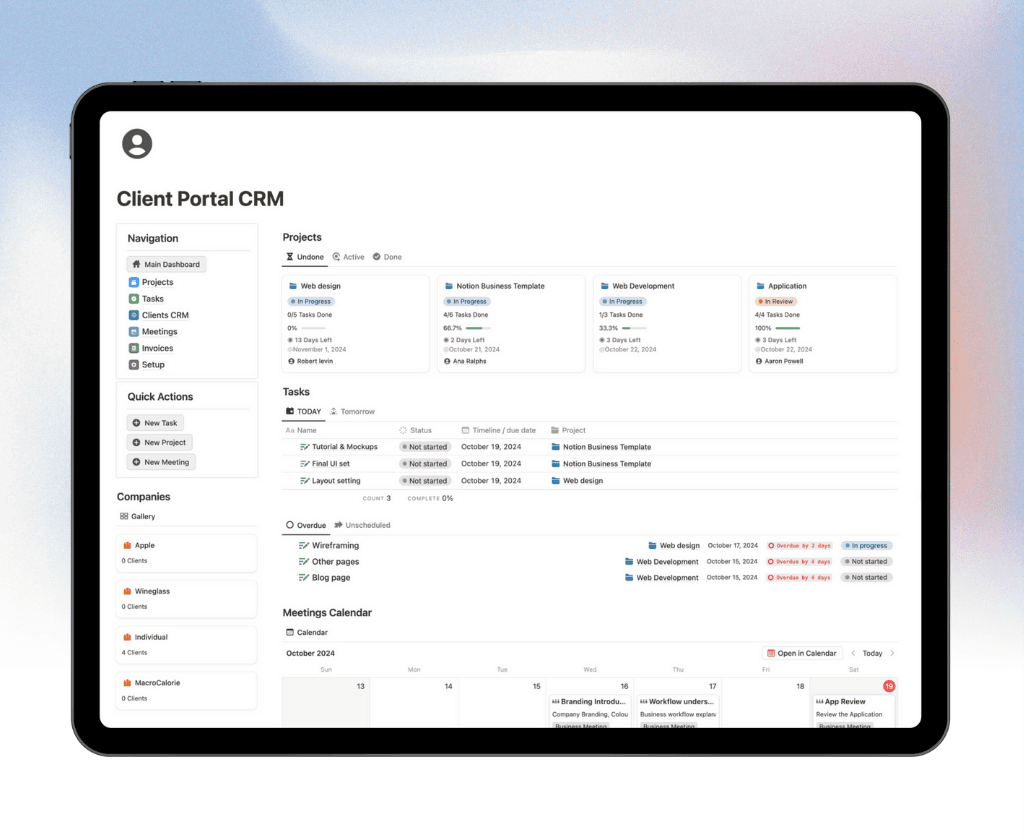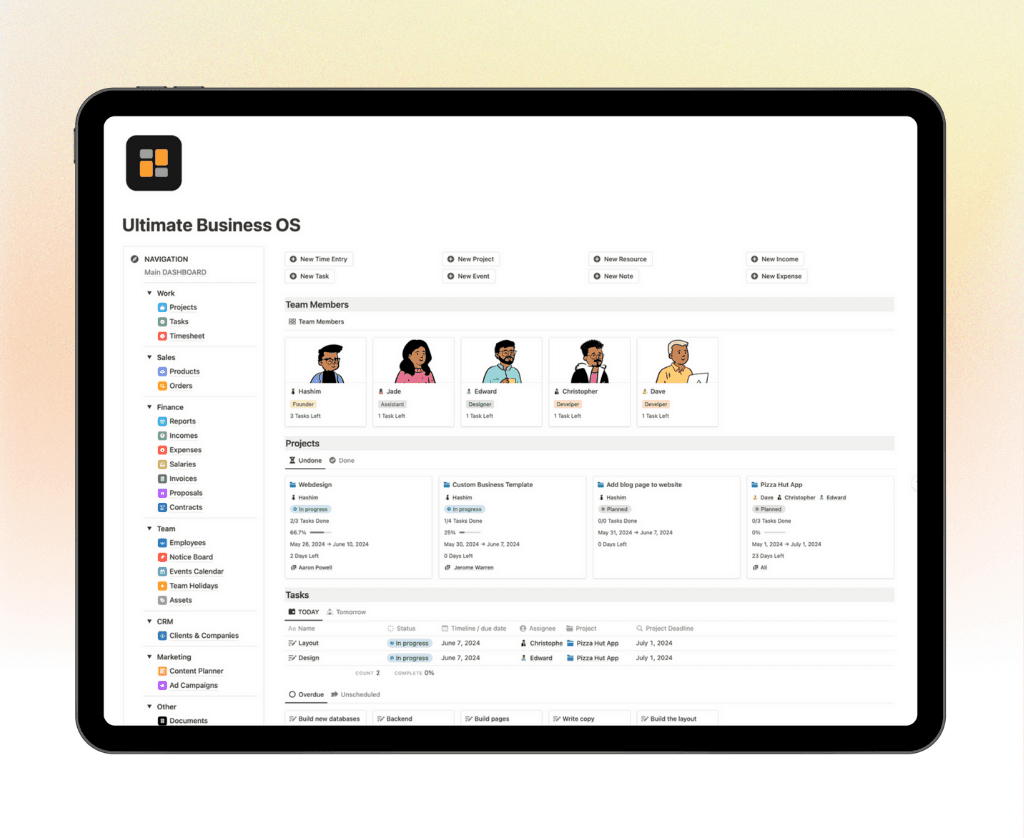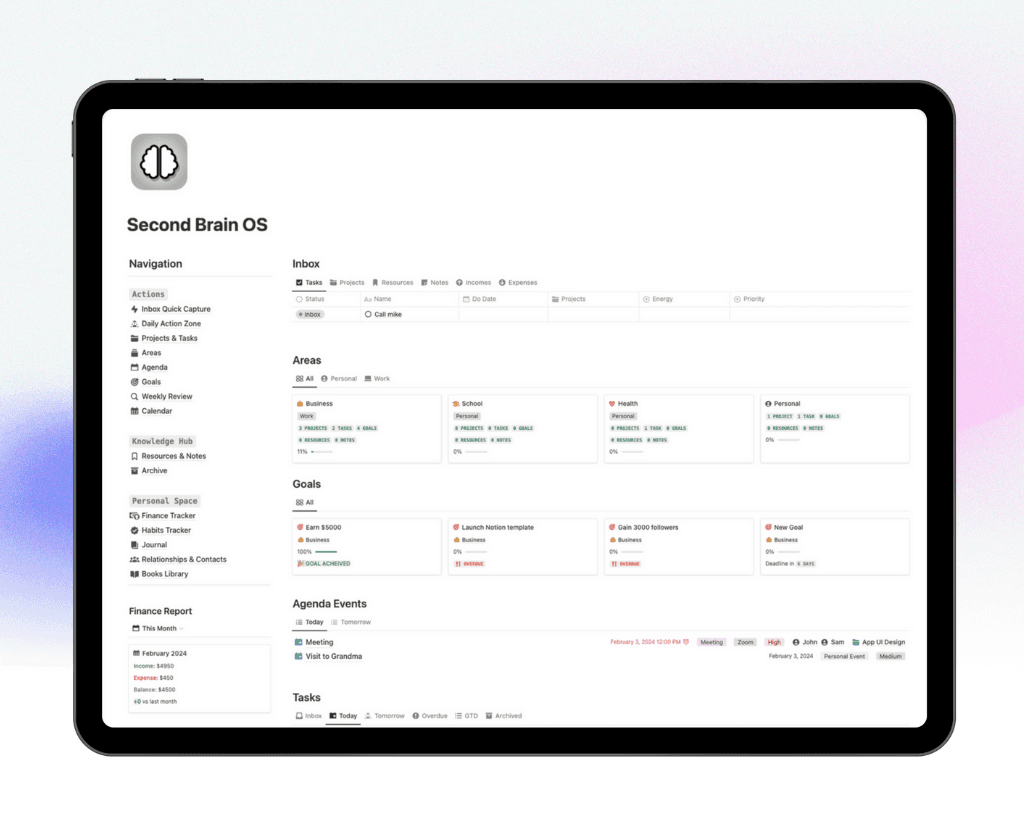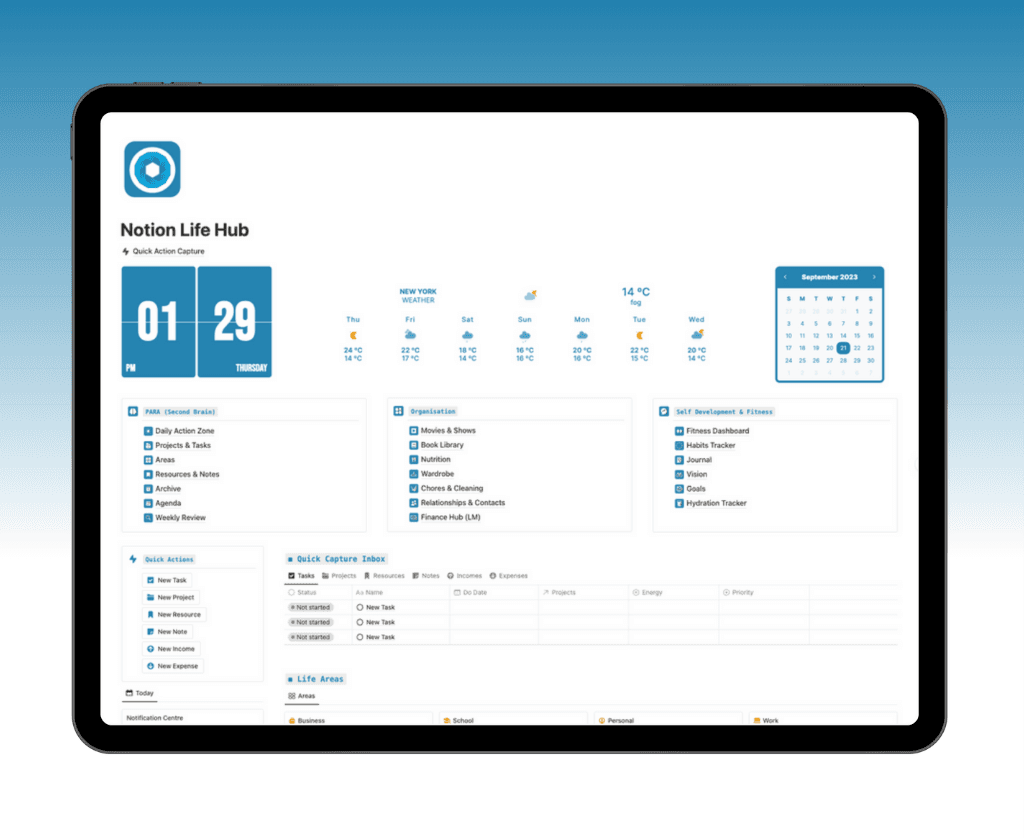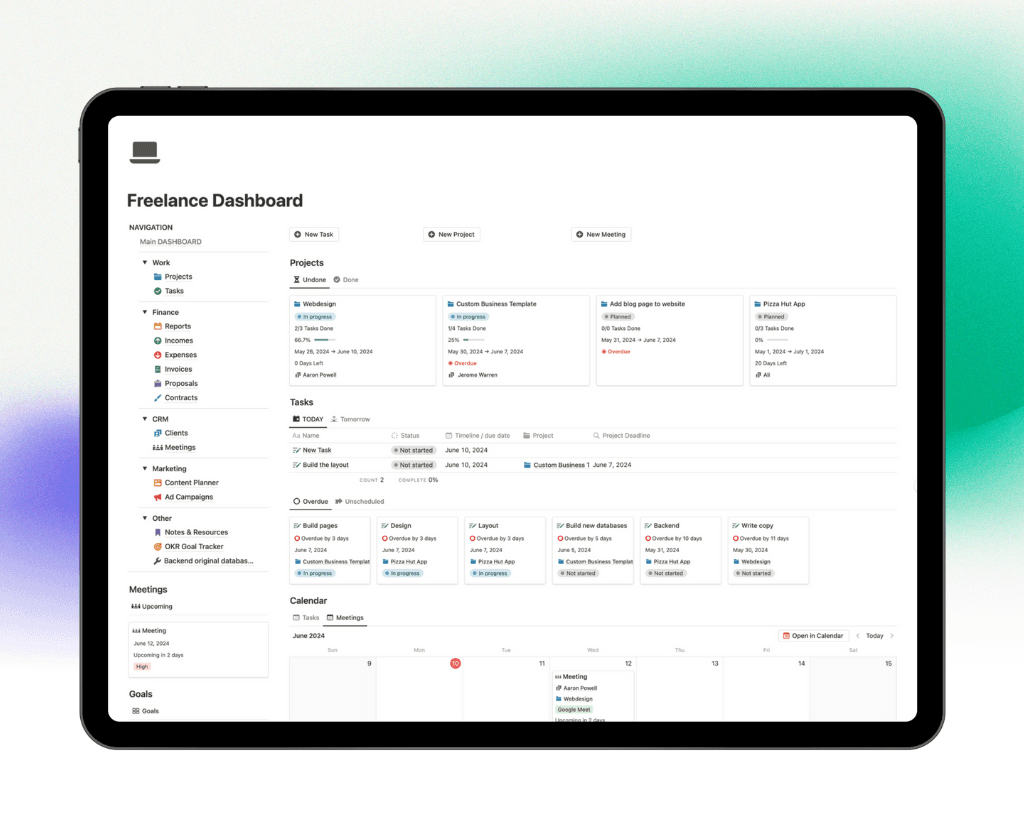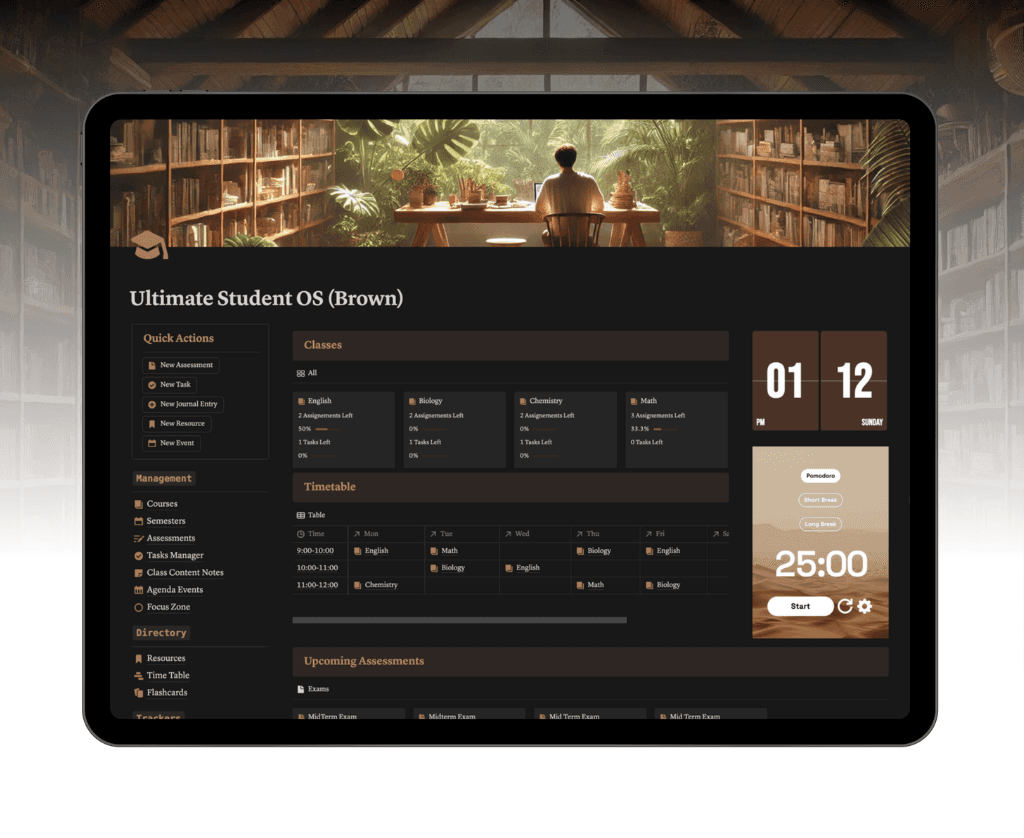← All Posts

Hashim Sultan

Nov 7, 2025
Table Of Content
Why Structured Goal Setting Matters
According to research published in the Psychological Bulletin, individuals who write down their goals are 42% more likely to achieve them than those who don't. This striking difference isn't just about documentation—it's about the fundamental power of structure in transforming vague aspirations into concrete achievements.
When we create structured goals, our brains experience a remarkable shift in focus. Rather than keeping multiple competing priorities swirling in our mental space, written goals create cognitive clarity. This mental offloading frees up valuable cognitive resources, allowing us to concentrate on execution rather than constantly remembering what we should be doing next.
The psychological benefits extend beyond simple organization. Structured goals trigger specific motivational mechanisms in our brains. Each time we complete a clearly defined step and mark it complete, our brains release dopamine, creating a natural reward system that propels us forward. This built-in feedback loop reduces procrastination and builds momentum through visible progress.
Consider the practical difference between these two approaches: A business owner thinking, "I want to improve customer satisfaction" versus one who writes, "Increase customer retention by 15% this quarter by implementing a follow-up system for all purchases." The second approach creates immediate clarity about what success looks like and suggests specific actions to take.
For both personal productivity enthusiasts and business teams, structured goals transform decision-making. When faced with competing priorities or new opportunities, well-defined goals provide an instant filtering mechanism. Does this new project align with your documented objectives? If not, it becomes easier to say no or defer until a more appropriate time.
Understanding the OKR Framework
Origins and Purpose of OKRs
The Objectives and Key Results (OKR) framework originated at Intel in the 1970s under Andy Grove before gaining widespread recognition through Google's adoption in the late 1990s. Far from being just another corporate acronym, OKRs were designed to solve a fundamental organizational challenge: connecting daily work to meaningful outcomes while maintaining alignment across teams.
At its core, the OKR system creates transparency and focus by clearly articulating what teams aim to accomplish (Objectives) and how they'll measure success (Key Results). This clarity helps everyone understand not just what they're doing, but why it matters to the broader mission.
Structure of Effective OKRs
An effective OKR consists of two distinct components working in harmony. The Objective represents a clear direction—qualitative, inspirational, and time-bound. It answers the question: "Where do we want to go?" Good objectives motivate and provide context for the work ahead.
Key Results transform these aspirational objectives into measurable reality. They answer: "How will we know we're getting there?" Properly crafted Key Results are quantifiable, challenging yet achievable, and directly measure progress toward the objective.
Objectives are ambitious and inspiring , pulling teams toward meaningful achievements
Key Results are specific and measurable , removing ambiguity about success
The framework encourages stretch goals where 70-80% achievement is often considered successful
Regular check-ins are built into the system , creating accountability through visibility
Traditional Goal Setting | OKR Approach |
|---|---|
Annual planning cycle | Quarterly cadence with regular check-ins |
Success measured by completion (yes/no) | Success measured by degree (0-100%) |
Often kept private or within management | Transparent and visible across teams |
Typically conservative and achievable | Includes ambitious "stretch" goals |
Individual vs. Team Implementation
While OKRs gained fame in organizational settings, they function differently at personal versus team levels. For individuals, OKRs create focus and prevent the scattered approach that derails personal development. When tracking personal OKRs in Notion, you might connect learning objectives to specific project outcomes or link health goals to productivity metrics.
At the team level, OKRs shine in creating alignment. Individual objectives ladder up to team objectives, which support company-wide priorities. This cascading structure ensures everyone understands how their work contributes to broader goals. Our OKR Goal Tracker template simplifies this alignment process, making it easy to visualize how individual efforts connect to team outcomes.
Breaking Down Goals into Actionable Steps
The Power of Task Decomposition
The gap between setting ambitious goals and actually achieving them often comes down to one critical skill: task decomposition. This systematic approach of breaking large objectives into smaller components transforms overwhelming goals into manageable pieces.
Consider a business owner aiming to launch a new service. Rather than facing this as one massive undertaking, decomposition creates clarity: market research, service definition, pricing strategy, marketing materials, sales process, and launch plan. Each component becomes its own mini-project with specific deliverables.
For personal goals, the same principle applies. Learning Spanish becomes manageable when broken down into vocabulary acquisition, grammar practice, listening exercises, and conversation sessions. This decomposition reduces cognitive overwhelm while creating the psychological benefit of regular wins as you complete smaller components.
The key to effective decomposition lies in identifying natural breaking points in your goal. Look for distinct phases, different skill requirements, or logical groupings of related tasks. This creates a progressive path forward rather than a single intimidating mountain to climb.
Setting Meaningful Milestones
Milestones differ fundamentally from regular tasks—they represent significant checkpoints that indicate meaningful progress toward your objective. Well-placed milestones serve as natural review points, creating opportunities to assess progress, adjust course if needed, and celebrate achievements.
When setting milestones for effective goal tracking in Notion, look for completion points that represent approximately 15-25% of the total project. For a website redesign, milestones might include: finalizing wireframes, completing desktop designs, implementing responsive layouts, and launching the site. Each milestone represents a substantial achievement worthy of recognition.
The most effective milestones have three characteristics: they're clearly verifiable (you know definitively when they're complete), they represent meaningful progress (not arbitrary checkpoints), and they create natural momentum toward the next phase of work.
Creating Logical Workflows
Understanding task dependencies creates a natural roadmap for execution. Some tasks must happen sequentially (you can't write content before defining topics), while others can happen in parallel (designing graphics while writing copy). Identifying these relationships reveals your goal's critical path—the sequence of dependent tasks that determines your minimum timeline.
Define the end result clearly with specific success criteria
Identify major phases or components that make up the complete goal
Break each phase into specific tasks with clear deliverables
Determine dependencies between tasks to create logical sequences
Assign realistic timeframes to each task based on complexity
Identify key milestones for progress tracking and celebration
This structured approach transforms abstract goals into concrete action plans. When implemented in Notion, these components become database entries with properties for status, dependencies, deadlines, and assignees—creating a living system that evolves as you progress toward your objectives.
Using Notion Templates for Goal Planning
Key Features of Goal-Oriented Templates
Notion's database capabilities transform goal tracking from a static document into a dynamic system. Effective goal templates leverage several key features that dramatically improve how you set, track, and achieve objectives.
Linked databases create powerful connections between different aspects of your goals. A well-designed template might connect your high-level objectives to specific projects, which link to individual tasks. This relational structure means updating a task automatically reflects in your goal progress, creating a single source of truth across your entire system.
Visual progress indicators provide immediate feedback on your advancement. Progress bars, status properties, and completion percentages offer instant visual cues about where you stand. This visibility creates both motivation when you're advancing and appropriate concern when goals fall behind schedule.
Timeline views transform abstract deadlines into visual roadmaps. When tracking goals with Notion, calendar and timeline views show how your objectives and tasks distribute across weeks or months, helping identify potential bottlenecks or periods of overcommitment before they become problems.
Formula properties automatically calculate progress based on completed subtasks or milestone achievements. Rather than manually updating progress, well-designed templates use Notion's formula capabilities to reflect real-time status based on your actual work completion.
Check out our free OKR Goal Tracking system: GET THE TEMPLATE

Customizing Templates to Your Needs
The true power of Notion goal templates lies in their adaptability to your specific needs. Start by modifying property structures to match your terminology and workflow. If you prefer "Projects" to "Initiatives" or want to track "Priority" instead of "Impact," these simple changes help the template feel like your own system rather than someone else's.
Creating custom views allows you to focus on different aspects of your goals based on context. A "Weekly Review" view might filter for items requiring attention in the coming week, while a "Strategic Overview" might group objectives by department or business area. These different perspectives on the same data help you shift between tactical and strategic thinking.
Filtered views serve specific purposes in your workflow. Create views for "At Risk Goals," "This Month's Priorities," or "Quick Wins" to focus attention where it's most needed. These targeted views transform a comprehensive system into contextual dashboards for different situations.
Setting up automations for recurring goals or tasks eliminates repetitive setup work. For habits or regular objectives that reset (monthly sales targets, weekly content creation), template buttons can duplicate and reset entries with a single click, maintaining your structure while refreshing the content.
Template Types for Different Goal Frameworks
Different goal methodologies require different template structures. OKR tracking templates organize information hierarchically, with objectives linking to key results, which may connect to projects and tasks. These templates typically include progress calculations, alignment indicators, and confidence scores to track both completion and effectiveness.
SMART goal templates emphasize specificity and measurement. They include properties for each SMART component (Specific, Measurable, Achievable, Relevant, Time-bound) and often incorporate verification methods to confirm when goals are truly complete rather than just "mostly done."
Habit tracker templates focus on consistency rather than completion. They track streaks, provide visual cues for maintaining chains of behavior, and often include reflection components to identify patterns in successful versus unsuccessful habit maintenance.
Project-based goal templates handle complex initiatives with multiple workstreams. They typically include robust task management, resource allocation, and dependency tracking to manage the complexity of multi-faceted goals.
Pre-built structure eliminates decision fatigue about how to organize your goals
Professionally designed systems based on proven methodologies save learning time
Time savings from not having to create complex formulas and relations yourself
Consistent format ensures nothing important is overlooked in your planning
Built-in review mechanisms maintain accountability throughout your goal cycle
Scalable frameworks grow with your needs from personal projects to team objectives
Our Notion Business Hub integrates comprehensive goal tracking with other business operations, creating a unified system where objectives connect directly to projects, client work, and financial outcomes.
Tracking Progress and Staying Accountable
Establishing Regular Review Cycles
The difference between abandoned goals and achieved objectives often comes down to review frequency. Effective goal systems require intentional review cycles at different intervals, each serving a specific purpose in your progress.
Daily quick checks focus on immediate action items and blockers. These 5-10 minute reviews aren't deep analyses but rather orientation sessions to ensure your day's work aligns with your goals. In Notion, a filtered view showing only "Next Actions" or "Today's Priorities" facilitates these quick checks without overwhelming you with the entire system.
Weekly reviews provide the sweet spot for course correction. These 30-60 minute sessions evaluate what worked, what didn't, and what adjustments you need to make. A well-structured weekly review answers: What progress did I make? What obstacles appeared? What's my focus for the coming week? How do my immediate tasks connect to my larger objectives?
Monthly or quarterly deep dives evaluate overall goal alignment and progress patterns. These longer sessions (1-2 hours) look beyond tactical execution to assess whether your goals themselves remain appropriate. Are you making meaningful progress? Do your objectives still align with your vision? What patterns emerge across multiple weeks of execution?
Review Frequency | Duration | Primary Focus |
|---|---|---|
Daily | 5-10 minutes | Immediate tasks, blockers, and priorities |
Weekly | 30-60 minutes | Progress assessment, adjustment, next week planning |
Monthly | 60-90 minutes | Pattern recognition, resource allocation, medium-term alignment |
Quarterly | 2-3 hours | Strategic alignment, major adjustments, celebration of achievements |
Visualizing Progress in Notion
Notion's flexible views transform abstract goal tracking into visual motivation. Dashboard views create visual goal centers where you can see multiple objectives at a glance. These dashboards might include progress bars for key projects, upcoming milestones, and recent achievements—all providing immediate visual feedback on your advancement.
Progress properties show completion percentages through visual indicators. Whether using simple checkbox counts, manual progress sliders, or formula-calculated percentages based on subtask completion, these visual cues provide immediate feedback on your status.
Timeline views reveal how your goals distribute across time periods. This bird's-eye view helps identify periods of overcommitment or potential bottlenecks before they derail your progress. Seeing multiple goals on a single timeline also highlights potential conflicts or complementary efforts.
Color-coding and icons create instant visual recognition. Using consistent colors for different goal categories (personal, professional, health) or status indicators (on track, at risk, blocked) allows you to process information quickly without reading every detail.
Our PARA Dashboard template provides an effective way to organize and visualize goals within a broader productivity system, creating clear connections between your projects, areas of responsibility, resources, and archives.
Accountability Systems and Triggers
Even the best-designed goal system fails without accountability mechanisms. Reminder properties in Notion can be configured to highlight approaching deadlines or overdue items. These visual triggers bring attention to areas needing focus before they become problematic.
Dashboard views specifically for at-risk goals create visibility for items needing attention. A filtered view showing only objectives below 70% completion expected for their timeframe immediately highlights where to focus your energy.
Accountability partners or team check-ins add social commitment to your goals. Whether through formal team reviews or informal accountability buddies, knowing someone else will see your progress (or lack thereof) creates powerful motivation. Notion's sharing features make it easy to provide appropriate visibility to these accountability partners.
Notion's notification features can be used strategically to maintain momentum. Comment mentions, assigned tasks, and database reminders create a notification ecosystem that keeps goals present in your awareness without requiring constant manual checking.
Common Mistakes and How to Avoid Them
Goal Setting Pitfalls
Even with powerful tools like Notion, certain goal-setting mistakes consistently undermine success. Setting too many goals simultaneously is perhaps the most common error. When everything is a priority, nothing is. Limit yourself to 1-3 major objectives per quarter, with no more than 3-5 key results per objective. This constraint forces prioritization and prevents the scattered focus that kills progress.
Creating vague objectives without measurable outcomes leads to uncertainty about success. "Improve team communication" leaves too much room for interpretation, while "Reduce average email response time to under 4 hours" provides clear criteria for achievement. Every goal should include specific metrics that definitively answer whether you've succeeded.
Failing to connect goals to daily actions creates a disconnect between aspirations and execution. Your goal system should create a clear line of sight from long-term objectives to this week's tasks. Without this connection, goals remain abstract concepts rather than driving forces in your daily work.
Missing timeframes or deadlines removes the healthy tension that drives progress. Open-ended goals tend to remain perpetually "in progress" without the focusing mechanism of a deadline. Every objective should include a target date, even for ongoing initiatives.
Setting goals that are either too ambitious or too easy undermines the motivational value of your system. Impossible goals lead to discouragement, while too-easy goals fail to inspire your best effort. The sweet spot lies in challenging but achievable objectives that stretch your capabilities without breaking your motivation.
Template Implementation Errors
When implementing goal tracking in Notion, overcomplicating template structures with too many properties creates unnecessary friction. Start with the essential properties (name, status, deadline, progress, notes) and add complexity only as needed. Remember that each additional property creates maintenance overhead.
Not customizing templates to match personal workflows leads to abandoned systems. The best template is one you'll actually use, which means adapting it to your terminology, review cadence, and working style. Spend the time upfront to make the template feel like yours rather than forcing yourself to adapt to someone else's system.
Failing to maintain and update the system regularly turns a dynamic tool into a static document. Block time for regular reviews and updates as part of your workflow. Our Task Manager template helps connect daily tasks to larger goals, creating natural opportunities to update your goal progress as you complete related tasks.
Creating disconnected databases that don't link related information fragments your productivity system. The power of Notion lies in connections—goals linking to projects, projects linking to tasks, tasks linking to resources. These relationships create a networked system rather than isolated lists.
Matches your preferred goal framework (OKR, SMART, etc.)
Balances comprehensiveness with simplicity for your specific needs
Includes built-in review mechanisms that match your preferred cadence
Allows for appropriate customization without requiring database expertise
Connects to your existing workflow systems rather than creating silos
Adapting Goal Systems for Personal vs Business Use
Personal Goal Tracking Considerations
Personal goal tracking thrives on intrinsic motivation rather than external accountability. While business goals often have external stakeholders and consequences, personal goals rely on your internal drive. This means personal goal systems should emphasize your "why"—connecting objectives to your values and vision rather than just tracking metrics.
Balancing multiple life areas requires a holistic approach. Unlike business goals that typically align with clear organizational objectives, personal goals span diverse domains: health, relationships, learning, finances, and more. Effective personal goal templates in Notion use categories or tags to organize these different life areas while maintaining connections between related goals.
Privacy and reflection components matter more in personal systems. Your personal goals might include sensitive aspirations or private challenges that wouldn't appear in a business context. Your Notion setup should include space for reflections, journaling, or private notes that capture your thoughts and feelings about your progress.
Connecting habits to larger personal objectives creates sustainable progress. Many personal goals require consistent small actions rather than project-based work. Your system should link daily habits (reading 20 pages, exercising 30 minutes) to their corresponding larger goals (finishing 12 books this year, improving cardiovascular health).
Business and Team Goal Management
Business goal systems require alignment between individual, team, and organizational objectives. This cascading structure ensures everyone understands how their work contributes to broader outcomes. In Notion, this often means creating relation properties that connect individual OKRs to team objectives and company priorities.
Transparency and visibility considerations shape how goals are shared. While personal goals might remain private, business objectives typically require appropriate visibility to create alignment. Notion's sharing features allow for nuanced access control—executives might see all company goals, while team members might see only their department's objectives plus company-wide priorities.
Collaborative aspects of goal setting and tracking require different structures. Business goals often involve multiple contributors, requiring clear ownership, contribution tracking, and communication channels. Templates should include assignee properties, comment sections for updates, and status indicators visible to all stakeholders.
Integration with other business systems creates a unified workflow. Business goals connect directly to projects, client work, team responsibilities, and financial outcomes. Our Notion Ultimate Business OS integrates goal tracking with other business operations, creating a comprehensive system where objectives directly influence daily work.
Dimension | Personal Goal Systems | Business Goal Systems |
|---|---|---|
Typical Timeframes | More flexible, often aligned with personal seasons | Structured around quarters and fiscal years |
Accountability | Internal, self-directed | External, team-based |
Integration Needs | Connected to habits and personal projects | Linked to business metrics, projects, and clients |
Complexity | Simpler structures with fewer dependencies | More robust with multiple stakeholders and connections |
Review Frequency | Often weekly with quarterly reflection | Daily, weekly, and formal quarterly reviews |
Whether for personal development or business growth, effective goal tracking in Notion transforms abstract aspirations into achievable outcomes. The right template provides structure without constraint, guiding your progress while adapting to your unique needs and workflow.
← All Posts
Get Lifetime Access
Get instant lifetime access to all current and future Notion templates.
✓ 8 Premium Notion Templates
✓ Lifetime Access
✓ Access to all Future Templates
✓ $300+ value
✓ Bonus 10 Templates
$119
$299
Get it Now
70% OFF










